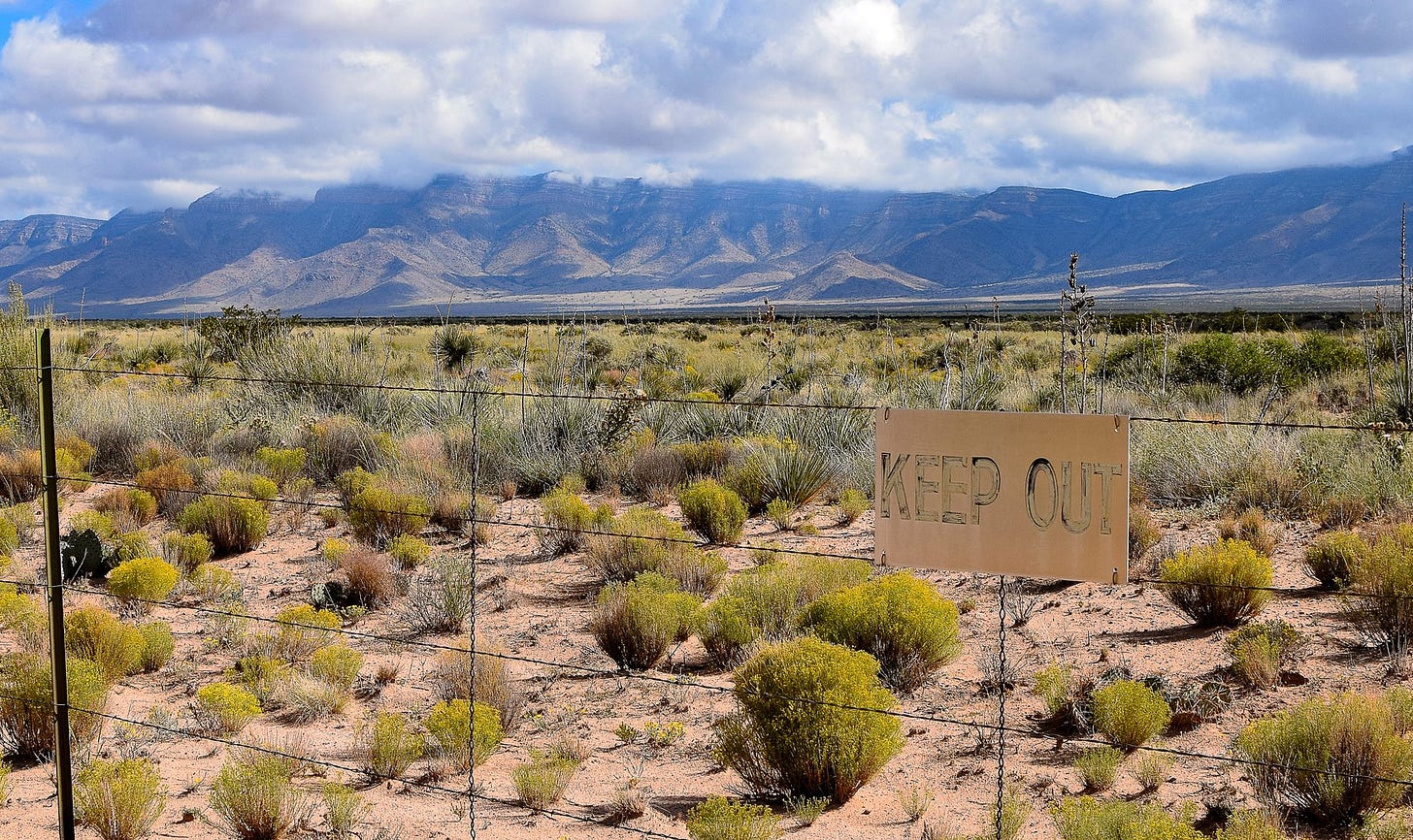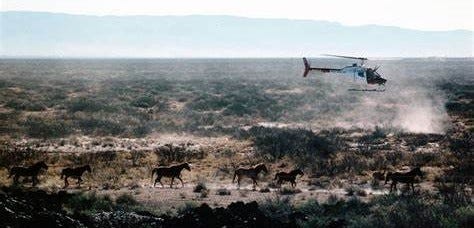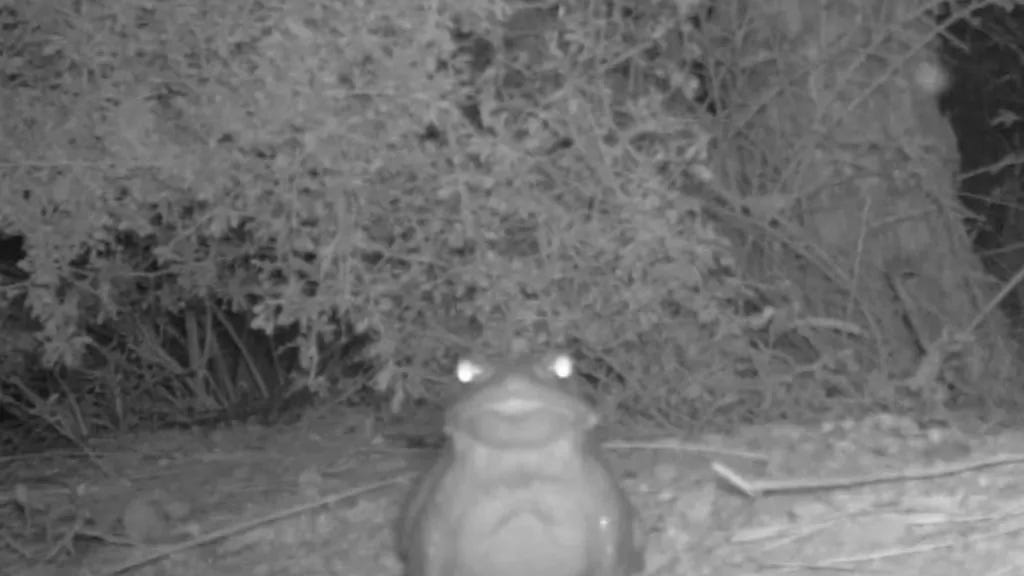In a previous post, I wrote about the Trinity Site which was where the first atomic bomb exploded. That area has been cut off from the general public since then and when the fences went up to keep people out, hundreds of horses were trapped inside. The herds lived there for about 50 years until they were rescued. Read on and learn about the Wild Horses of White Sands.
America’s Wild Horses
Wild horses roamed free during the Pleistocene era in North America until about 20,000 years ago which is about the time that humans first appeared in the Americas. The reason why they went extinct in the Americas is not known but when the Spanish conquistadors arrived, horses again populated the continent. While exploration took place, some stray horses reverted to their wild state. At one time, there were around 2 million wild horses, however, now there are fewer than 25,000 horses with as many as 30,000 others being held by the Bureau of Land Management (BLM) awaiting either adoption, relocation or export for slaughter.
Trapped Inside the Missile Range
At the time of the Trinity Test back in 1945, the US Government took two million acres of land by right of eminent domain and required the ninety-seven families living in the area to vacate quickly so testing could begin. Most of the ranchers accepted the low land price the government offered in the name of patriotism and defense of the nation. The ranchers’ cattle were easily sold but there was no place to relocate the horses, so they were abandoned and left to fend for themselves.

During the decades of the 1940s and 1950s, the perimeter of the White Sands Missile Range was fenced, trapping the horses within and essentially, making them property of the US Government. Even though missiles exploded around them, for almost half a century, the horses survived. By the beginning of the 1990s the almost 2,000 head of horses inhabited the land inside the fences.
Many Horses Were Dying due to Extreme Drought
By the summer of 1994, drought conditions took their toll and the wildlife biologist assigned to White Sands, Patrick Morrow, discovered 122 dead horses in addition to orphaned foals at a dry watering hole. As you would expect, the die-off of so many members of the herd from starvation and dehydration drew international media attention and quickly turned into a crisis. New Mexico state government officials were alarmed as talk of a tourism boycott of the state grew as they were seen as allowing the tragedy to occur.
The problem was complicated. The Wild Free-Roaming Horses and Burros Act of 1971 was put into place to protect and preserve the remaining wild horses in the American West. The White Sands herd were not considered wild; they lived on land owned by the Department of Defense not the public. In addition, their ancestors had once been domesticated. As a result, the horses were considered feral and not wild. What a mess! It took months to figure out how to solve this problem. Finally, the missile range’s commander ordered that the animals be removed one way or another.
Finding an Expert to Head Up the Project
Back in the 1980s, a veterinarian and horse trainer named Don Hoglund helped establish the National Wild Horse Prison Inmate Program located in Las Cruces, New Mexico. This was a way of preparing captured horses for adoption. He felt that bringing “outlaw” horses and humans together could have a healing effect on both. Hoglund was asked to head up the project of removing the horses from the missile range.
He was not thrilled with the idea. He felt that if the rescue didn’t go well, he could become a scapegoat for a failed operation. Ultimately, he realized that he didn’t have a choice. “They trapped me inside my (veterinary) oath. You give that oath, you better keep it,” Hoglund said. He knew he couldn’t not aid in the rescue of the herd.
Capturing the Herd
It was well into 1995 before the rescue took place. Time was spent arranging adoptions for most of the animals after they had been corralled and treated for disease and malnutrition. Corralling the horses was accomplished by a crew of Army helicopters and cowboys on all-terrain vehicles. Since the horses were in several established herds, several roundups happened throughout the year. The operation was remarkably successful keeping the fatality rate at a very low percentage. Every horse that was corralled received essential medical attention and a series of vaccinations. They were fed high-quality hay and plenty of fresh water.
All in all, 1800 horses were removed from the missile range by late summer of 1995. Horses were adopted by new owners in New Mexico, Texas, Oklahoma, Tennessee and California. The project was a rousing success. Hoglund wrote a best-selling book “Nobody’s Horses” about the project and includes many of the difficulties encountered including a miscommunication that he had with some of the cowboys that caused a mini stampede that badly broke his leg. Since his main function was to provide veterinary treatment for the horses, after that accident, he denied pain medication for his broken leg as he would be unable to practice medicine otherwise.
Don Hoglund's best-selling book "Nobody's Horses"
Dr. Don Hoglund’s Legacy
Years after the rescue Hoglund wrote bestselling book, "Nobody's Horses," chronicling the project that rescued the wild horses of White Sands. In an interview that he gave the Farmington Daily Times in 2019, he described the rescue as the highlight of his career. Unfortunately, Hoglund passed away on February 9, 2019 after a short battle with cancer. He did, before he passed, have conversations with a TV production company regarding making his book into a feature film or a limited television series. Perhaps in the future, we will get to experience his story as a film or movie.
Today’s News Highlights Similar Story
This week, I’ve come across new stories about wild horses that live within Theodor Roosevelt National Park. When the park was established back in 1947, a couple of bands of wild horses were accidentally fenced into the park.
In the early years, park officials began eliminating the horses by shooting them on sight or hiring local cowboys to round them up for removal. Shockingly, the park even sold horses to a local zoo at some point to be food for large cats.
According to a 1978 environmental plan, the park is supposed to reduce the number of horses from approximately 200 head down to 35-60. There are many people who oppose the plan. Currently there are several alternatives being considered but one thing’s for sure is that the National Park Service needs a new plan.
Current article about wild horses in Theodore Roosevelt National Park
My Next Post
Well, I think we need to change it up a bit and move away from New Mexico and its history of the atomic bomb. The National Park Service Facebook page has some pretty interesting posts. Last fall their post about a psychedelic toad went viral. Since that species literally lives in my backyard (the Sonoran Desert), I figured we could take a look and see what all that is about.
As always, please feel free to share these posts and subscribe to my newsletter if you haven’t already.












There are wild horses in Theodore, I have photos. I also just posted photos in my notes recently of the Salt River wild horses and the elusive wild horses of the Caja del Rio plateau outside Santa Fe.
Living in the Nevada desert for many years allowed me the chance to see many of these roaming wild horses. Beautiful creatures.